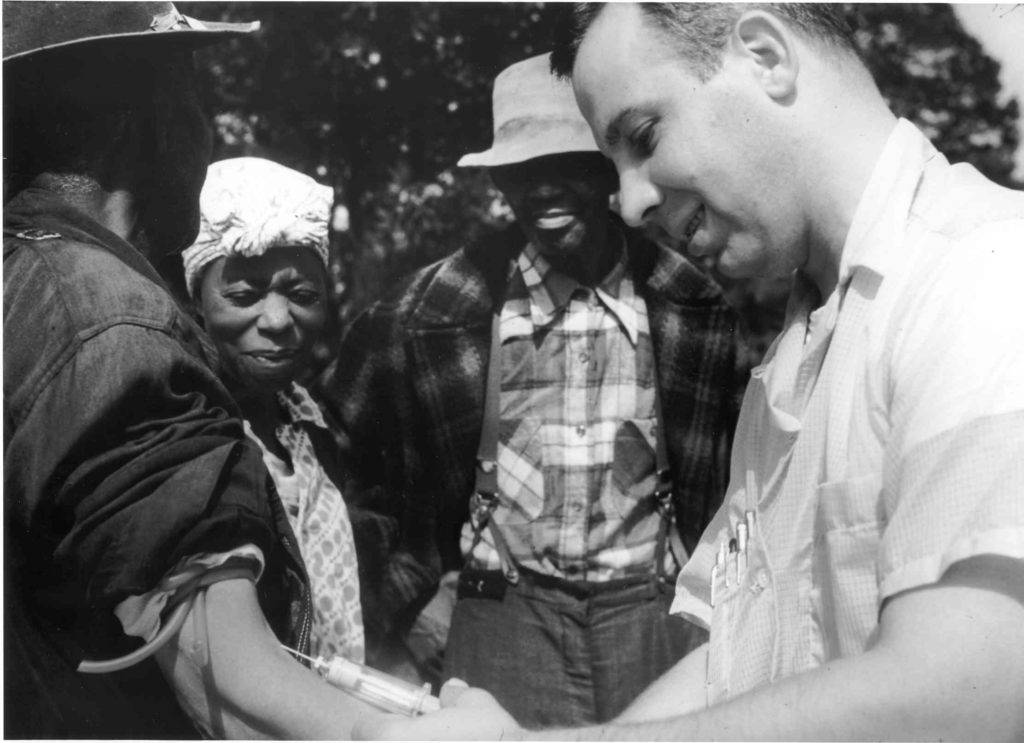The Unwitting Herd Immunity Experiments

Due to the utter indifference to the fate of meatpacking workers and prisoners, we may find out more about herd immunity issues through semi-intentional herd immunity experiments on unwitting and unwilling participants soon.
Here’s a Marshall Project site dedicated to following the rates of infection among prisoners and prison workers. And while the total numbers are high but not anything like herd immunity high, though many states are intentionally undercounting and undertesting so the overall rates are obviously much higher than reported, what is happening in particular prisons is important. And with social distancing impossible in prisons, it’s really a grotesque experiment in the true impact of COVID-19 among the most underprivileged of populations.
According to U.S. Immigration and Customs Enforcement, 674 detainees have tested positive, out of 1,346 people tested. So far, at least one detainee has died of the virus, at the Florence staging facility, a transfer center in Arizona. At least four ICE staff at the Hudson County Jail in New Jersey have died. And cases were reported, among both staff and detainees, at more than 40 other facilities. Cases were also confirmed at more than two dozen correctional facilities for youth, according to the UCLA data.
Part of the reason there’s no official comprehensive dataset tracking the impact of the coronavirus in the U.S. prison system is because there is no unified system, but rather a tangle of federal, state, and local jurisdictions. “It’s always been a decentralized fight, state by state, county by county,” said Dolovich.
That presents both a massive challenge and an opportunity, added Dolovich. Because there is no centralized body overseeing Covid-19 responses in prisons and jails, advocates have been lobbying hundreds of officials across the country, while armies of lawyers have been working around the clock on behalf of individual clients and entire classes of people. They have filed motions with dozens of courts arguing for relief that can range from diversion to lower sentences to compassionate release. “The level of advocacy effort and involvement is actually astonishing and inspiring right now,” Dolovich said. “There’s no easy levers. So people are basically slamming their heads against the wall and trying to see if there’s any kind of weakness they can take advantage of to help their clients.”
“We’ve had 40 years of a legal system that’s been crafted with the effect of making it extremely hard to provide any kind of meaningful constitutional relief for people,” she added. “We respond to any kind of social crisis with incarceration, and what we’re seeing now is the fruits of those efforts.”
The criminal injustice system has been an atrocity for basically all of American history and very much so is today. This is just another example. And like the meatpackers, the primary reason more people care than normal is that they themselves might get infected as opposed to real concern for the people involved. Speaking of meatpackers, as of May 1, in an industry with 130,000 workers, there were nearly 5,000 known cases and undoubtedly many more unknown cases. If the ratio of known cases to unknown cases is more or less 1:10, that means that perhaps 50,000 workers have had the virus. Maybe it’s less than that in this population. But the point is that a whole lot of workers have had it and more are going to get it.
What this ultimately means is that this is an immoral experiment in an unknown disease upon vulnerable populations. And the sad thing is, scientists are actually going to learn a lot about issues of herd immunity from these workers subjected to this without choice. Any comparisons to the Tuskegee Experiments are strictly appropriate.


